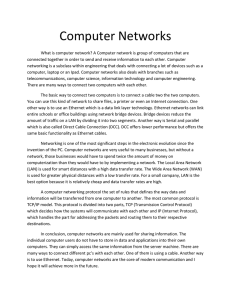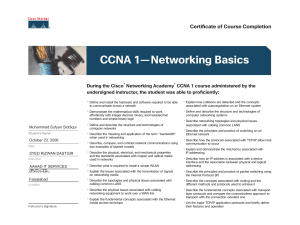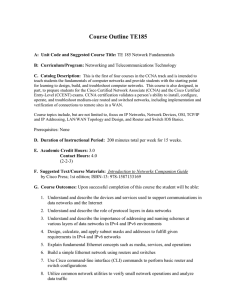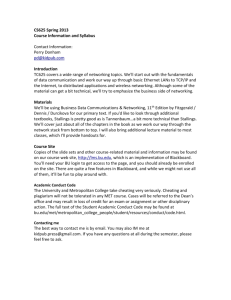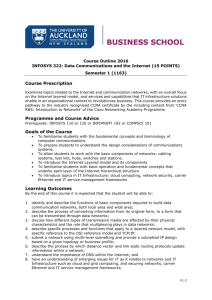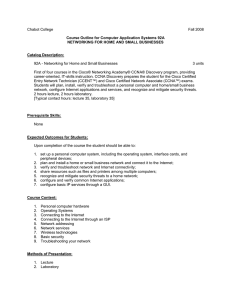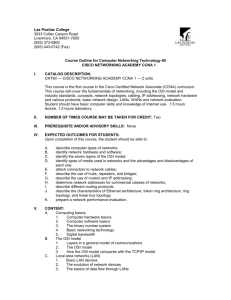CCNA Networking Case Study: Small Business LAN Design
advertisement
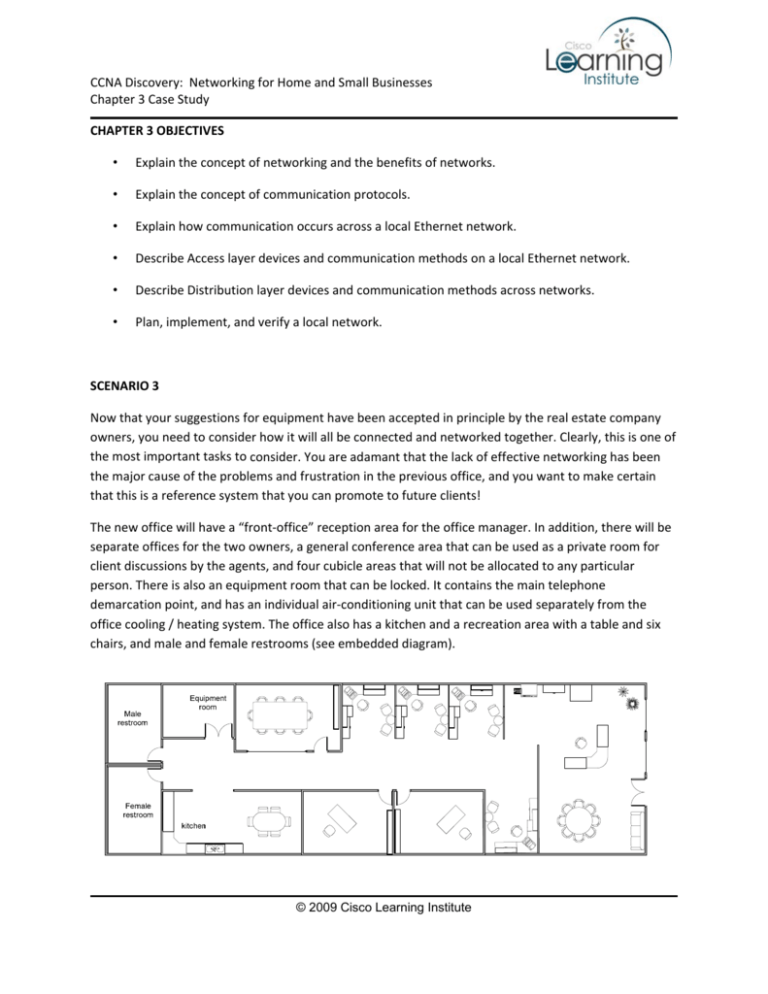
CCNA Discovery: Networking for Home and Small Businesses Chapter 3 Case Study CHAPTER 3 OBJECTIVES • Explain the concept of networking and the benefits of networks. • Explain the concept of communication protocols. • Explain how communication occurs across a local Ethernet network. • Describe Access layer devices and communication methods on a local Ethernet network. • Describe Distribution layer devices and communication methods across networks. • Plan, implement, and verify a local network. SCENARIO 3 Now that your suggestions for equipment have been accepted in principle by the real estate company owners, you need to consider how it will all be connected and networked together. Clearly, this is one of the most important tasks to consider. You are adamant that the lack of effective networking has been the major cause of the problems and frustration in the previous office, and you want to make certain that this is a reference system that you can promote to future clients! The new office will have a “front‐office” reception area for the office manager. In addition, there will be separate offices for the two owners, a general conference area that can be used as a private room for client discussions by the agents, and four cubicle areas that will not be allocated to any particular person. There is also an equipment room that can be locked. It contains the main telephone demarcation point, and has an individual air‐conditioning unit that can be used separately from the office cooling / heating system. The office also has a kitchen and a recreation area with a table and six chairs, and male and female restrooms (see embedded diagram). © 2009 Cisco Learning Institute CCNA Discovery: Networking for Home and Small Businesses Chapter 3 Case Study TASKS 3 1. Develop a plan for a local area network for the office. You should indicate how you propose to provide access to the network for office staff, casual staff, and clients who may wish to access the Internet for various reasons. 2. Indicate whether you plan to use a peer to peer network or a client / server network, and the reasons why you have made this choice. 3. What type of cabling will you propose? How many cable outlets should be included at each workstation? Should there be cable outlets at various common usage areas of the office? What provision should be made for voice communications? How might this be achieved? 4. What type of network devices will be included? 5. Broadly, how will internet access be achieved? (This will be covered in detail in the next section.) 6. Is wireless a part of your plan? Why? 7. How will workstations and other devices be addressed? Define a simple, suitable addressing plan for the network. 8. The office manager is concerned about security. What additional equipment could be linked into the network to provide some security? 9. It is proposed to include a television in the staff kitchen area. Can this be included on the network? Should it? What limitations and / or restrictions should be imposed? 10. When you have completed your plan, you should use ‘Packet Tracer’ to build a model and check out that it will achieve what you expect. The daughter of the agent who you recently assisted with some mathematic skills has now been accepted in a computer science class. She is delighted, of course! However, she is having some difficulties with understanding the issue of “protocols” and especially what is meant by a “non‐ deterministic” or “probabilistic” system such as Ethernet. 11. Your remaining task is to develop a brief presentation for the student that indicates what is meant by a non‐deterministic protocol, and simplistically explain how an Ethernet frame is used to carry information between two linked devices. You may use a hub between the devices, but do not utilize a switch as this will complicate the fundamental issue. © 2009 Cisco Learning Institute
